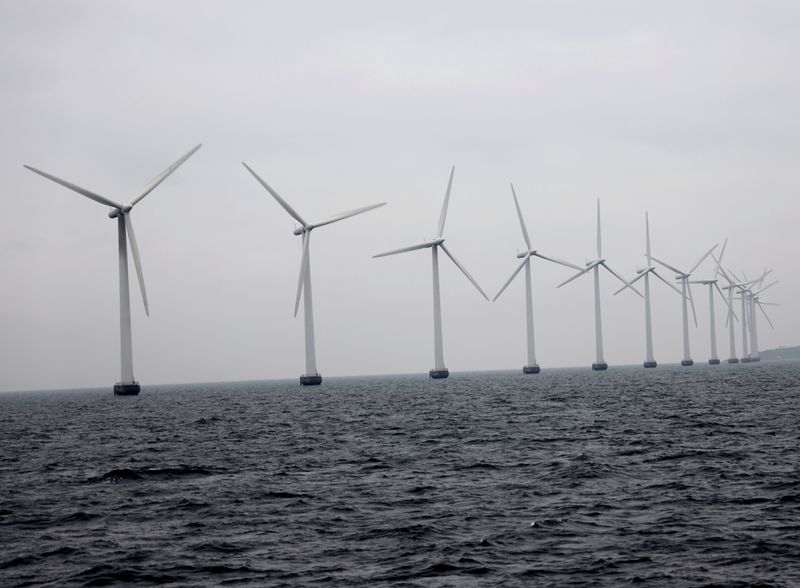This post was originally published on this site
https://i-invdn-com.akamaized.net/trkd-images/LYNXMPEG010LT_L.jpg
By Jacob Gronholt-Pedersen
COPENHAGEN (Reuters) – Denmark sourced almost half its electricity consumption from wind power last year, a new record boosted by steep cost reductions and improved offshore technology.
Wind accounted for 47% of Denmark’s power usage in 2019, the country’s grid operator Energinet said on Thursday citing preliminary data, up from 41% in 2018 and topping the previous record of 43% in 2017.
European countries are global leaders in utilising wind power but Denmark is far in front of nearest rival Ireland, which sourced 28% of its power from wind in 2018 according to data from industry group WindEurope.
Across the European Union, wind accounted for 14% of consumption last year, the group says.
The higher proportion of wind energy in Denmark last year was partly due to Vattenfall () starting operations at the Horns Rev 3 offshore wind farm in the North Sea in August.
The share of power from wind turbines at sea increased to 18% last year from 14% in 2018, Energinet said. Onshore wind accounted for 29% last year.
The International Energy Agency (IEA) said in October that while power generated from wind turbines at sea only accounts for 0.3% of today’s global electricity generation, capacity is set to increase 15-fold over the next two decades.
Denmark aims to reduce greenhouse gas emissions by 70% by 2030, with a new climate law passed late last year targeting an increase in the share of electricity sourced from renewable power to 100%.
Denmark, home to wind turbine giant Vestas and the world’s largest developer of offshore wind Orsted, has favourable wind conditions and began investing heavily in wind power in the 1970s.
Fusion Media or anyone involved with Fusion Media will not accept any liability for loss or damage as a result of reliance on the information including data, quotes, charts and buy/sell signals contained within this website. Please be fully informed regarding the risks and costs associated with trading the financial markets, it is one of the riskiest investment forms possible.

